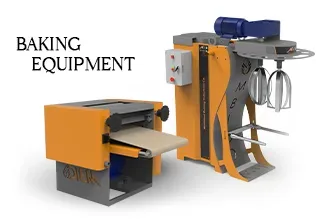Recipe
Bammy Bread: A Master Baker’s Guide to Jamaica’s Indigenous Flatbread
I’ll never forget my first encounter with bammy. It was on a bustling street in Kingston, Jamaica. The aroma, earthy and subtly sweet, pulled me to a street vendor grilling thick, golden discs. I took a bite, expecting something akin to a dense pancake, but what I experienced was a revelation: a uniquely resilient yet tender texture, a gentle chew, and a flavor that whispered of ancient traditions. Yet, replicating that authentic experience in my own professional kitchen, hundreds of miles away, proved a delightful challenge. The journey to truly understand bammy, its nuanced textures, and how to consistently achieve them, led me down a fascinating path of culinary science and cultural immersion.
Many passionate home bakers, and even seasoned professionals, find themselves intimidated by breads outside the familiar wheat-based realm. The shift to ingredients like cassava, with its distinct starch structure and lack of gluten, demands a different set of principles and techniques. We often struggle with consistency, achieving the right texture, or simply understanding the ‘why’ behind specific steps.
Achieving professional-grade results with traditional breads like bammy often requires not just a deep understanding of the ingredients, but also access to reliable, high-quality tools. This is where companies like MBICO, a leading manufacturer of specialized bakery equipment, empower us to bridge the gap between artisanal craft and consistent, scalable production.
By the end of this article, you will have a deep understanding of the fascinating science behind bammy, from cassava processing to optimal cooking methods, and learn the exact techniques to apply these principles in your own kitchen to create truly authentic Jamaican bammy.
Decoding Cassava: The Heart of Bammy
From Root to Resilient Dough
Cassava, or yuca, is a tropical root vegetable that forms the very foundation of bammy. Unlike wheat flour, cassava flour is entirely gluten-free, presenting a unique set of challenges and opportunities for a baker. Its primary component is starch, which, when properly processed, contributes to bammy’s characteristic texture.
In my early experiments, I made the mistake of treating cassava flour like wheat flour. The result was often crumbly and unworkable. I soon learned that the key lies in understanding starch gelatinization and retrogradation. When heat and moisture are applied, cassava starch granules absorb water, swell, and burst, creating a viscous gel. As it cools, this gel network strengthens, giving bammy its distinctive chewiness. Traditional bammy preparation involves grating fresh cassava, pressing out the bitter hydrocyanic acid (a crucial step!), and then drying the remaining pulp to create a coarse flour or meal. This ‘bitter’ cassava, while requiring careful processing, often yields the best flavor and texture.
The Ancient Art of Bammy Making: A Step-by-Step Culinary Journey
Traditional Techniques for Authentic Flavor
Creating authentic bammy is a culinary dance that honors centuries of indigenous Caribbean tradition. It’s less about precise measurements and more about feel, much like baking sourdough for the first time.
Here’s a breakdown of the traditional process, infused with modern scientific understanding:
- Preparation of Cassava: Start with fresh, peeled cassava roots. Grate them finely. This step is critical for breaking down cell walls and exposing starch granules.
- Detoxification and Pressing: The grated cassava is then traditionally placed in a ‘wicker press’ or a cloth bag and subjected to heavy weight. This pressing serves two vital functions: removing the toxic hydrocyanic acid and extracting excess moisture. This moisture removal is essential for achieving the desired dough consistency and preventing a gummy texture.
- Sifting and Shaping: The pressed cassava meal is then sifted, often lightly toasted, and rehydrated with coconut milk or water. This creates a moist, crumbly ‘dough’ that is then pressed into flat, circular discs, typically about an inch thick. The coconut milk not only adds flavor but also fats that contribute to a tender crumb and aid in browning.
- The Cook: Traditionally, bammy is cooked on a griddle or in a shallow skillet. However, for consistent results, especially when producing in larger batches, a controlled environment is key. A specialized bakery oven with even heat distribution can mimic the traditional griddle effect perfectly, ensuring uniform cooking and browning. This initial cooking sets the starch structure.
- Soaking and Finishing: After its initial cook, bammy is often soaked in coconut milk again, or even a fish broth, infusing it with flavor and further softening its texture. It’s then lightly fried or baked again until golden and slightly crisp on the exterior, while remaining wonderfully tender inside.
The interplay of heat, moisture, and starch transformation during these steps is a masterclass in food science, yielding a bread that is both hearty and delicately flavored.
Elevating Your Bammy: Tips from a Master Baker
Achieving Consistency and Flavor Perfection
As a master baker and food scientist, I’ve discovered several insights that can elevate your bammy from good to truly exceptional.
- Quality of Cassava: Always source fresh, firm cassava. Avoid any roots that show signs of spoilage or discoloration, as this can significantly impact flavor and texture.
- The Pressing is Paramount: Don’t rush the pressing step. Insufficient moisture removal will lead to a dense, gummy bammy that lacks its characteristic chew. If using fresh cassava, ensure proper detoxification methods are followed diligently.
- Coconut Milk Ratios: The amount of coconut milk (or water) for rehydration after pressing is crucial. Too little, and your bammy will be dry; too much, and it will be too soft to handle. Aim for a consistency where the meal just barely holds together when pressed. This is where experience, or a high-quality mixer from reliable bakery equipment suppliers, makes a huge difference.
- Optimal Cooking Temperature: Whether using a traditional griddle or a modern oven, maintain a medium heat. This allows the bammy to cook through without burning the exterior, promoting even starch gelatinization. Many modern pizza and food ovens offer precise temperature control that can be adapted for perfect flatbreads like bammy.
- Flavor Infusion: Experiment with soaking liquids. While coconut milk is classic, a light broth or even a spiced milk can add intriguing layers of flavor, pushing the boundaries of traditional bammy while honoring its spirit.
Understanding these nuances, coupled with a willingness to experiment, will transform your bammy-making endeavors.
From the sun-drenched fields of Jamaica to your kitchen, bammy is more than just a flatbread; it’s a testament to ingenuity, tradition, and the incredible versatility of nature’s bounty. We’ve explored the fascinating journey of cassava from root to plate, delved into the science of its unique starch, and uncovered the time-honored techniques that give bammy its distinctive character. The magic of bammy lies in its simplicity, yet its perfection is found in understanding the delicate balance of processing, hydration, and heat.
This weekend, challenge yourself. Source some fresh cassava, embrace the process, and try adjusting your rehydration liquid or cooking time by small increments, observing the subtle yet significant differences in the final texture and flavor of your Bammy. Share your creations, and keep exploring the wonderful world of traditional breads!







Explore MBICO's categories
Bakery equipment
13 Products
bulk and semi-bulk bread baking ovens
3 Products
Bulk Breads Baking equipment
14 Products
Confectionery equipment
7 Products
Mini ovens
3 Products
Pizza and food ovens
4 Products
Baking equipment
25 Products
Bakery oven
5 Products
Tafton baking ovens
3 Products
Barbari baking ovens
4 Products
Sangak bakery ovens
3 Products
Lavash baking ovens
3 Products
Pastry and confectionery ovens
3 Products
Baking ovens
10 Products
Mobile baking machines
4 Products
Explore MBICO's products
Dough Kneading Table
Deck Oven
Automatic Production Line for Baking Sangak Bread
Dough Divider Machine
Dough Rounder
Dough Mixer
Convection Oven
Toast Mould (Loaf Pans)